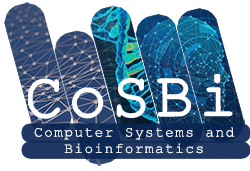PICTURE: Pathological response AI-driven prediCTion after neoadjUvant theRapiEs in NSCLC
Background
Lung cancer is the leading cause of cancer-related deaths worldwide, accounting for the highest mortality rates among both men and women. The most common subtype of lung cancer is non-small cell lung cancer (NSCLC), constituting approximately 85% of lung cancer cases. Currently, surgical treatment remains the mainstay of treatment for early-stage and locally advanced NSCLC. However, a notable post-surgery recurrence rate underscores the need for systemic therapy to improve cure rates. Neoadjuvant therapy (NAT) has shown potential in enhancing overall survival rates and reducing the risk of distant disease recurrence. Achieving a complete pathological response (pCR), hence the absence of tumor cells in all specimens, is a crucial endpoint of NAT. Evaluating pCR before surgical resection could guide the type of treatment, directing the aggressive surgery-based treatment only to patients who would benefit from it.
Hypothesis
The fundamental concept underlying PICTURE is that a multimodal representation of patients’ health status grasped by radiological images, histology images, cytology and molecular data, along with Electronic Health Records (EHRs) aligns consistently with the pCR. Therefore, exploiting the potential of artificial intelligence (AI) to integrate this heterogeneous medical data can provide accurate pCR prediction (Figure 1).

Objectives
PICTURE pursues the following three objectives: (I) Assess the role of baseline radiology imaging, histology imaging, citology and molecular data and EHRs and their combination to predict pCR; (II) Move forward multimodal deep learning (MDL) to better process multimodal data, making the performance of AI resilient and robust to search the quantitative signature for pCR prediction; (III) Provide explanations of the decisions taken by the AI to improve trust and transparency using explainability AI (XAI) models. PICTURE has an exploratory goal as well: after developing AI models using data from patients undergoing chemoradiation or chemotherapy, it will explore how to transfer the models to predict pCR for those patients undergoing chemoimmunotherapy (Figure 2).

The precise prediction of pCR marks a significant stride towards personalized medicine. Tailoring treatments based on individual patient characteristics ensures a more targeted and effective approach, leading to better treatment outcomes.
Consortium
- Università Campus Bio-Medico di Roma (UCBM)
- Università degli Studi di Torino (UniTo)
- Università degli Studi di Cassino (UniCas)

